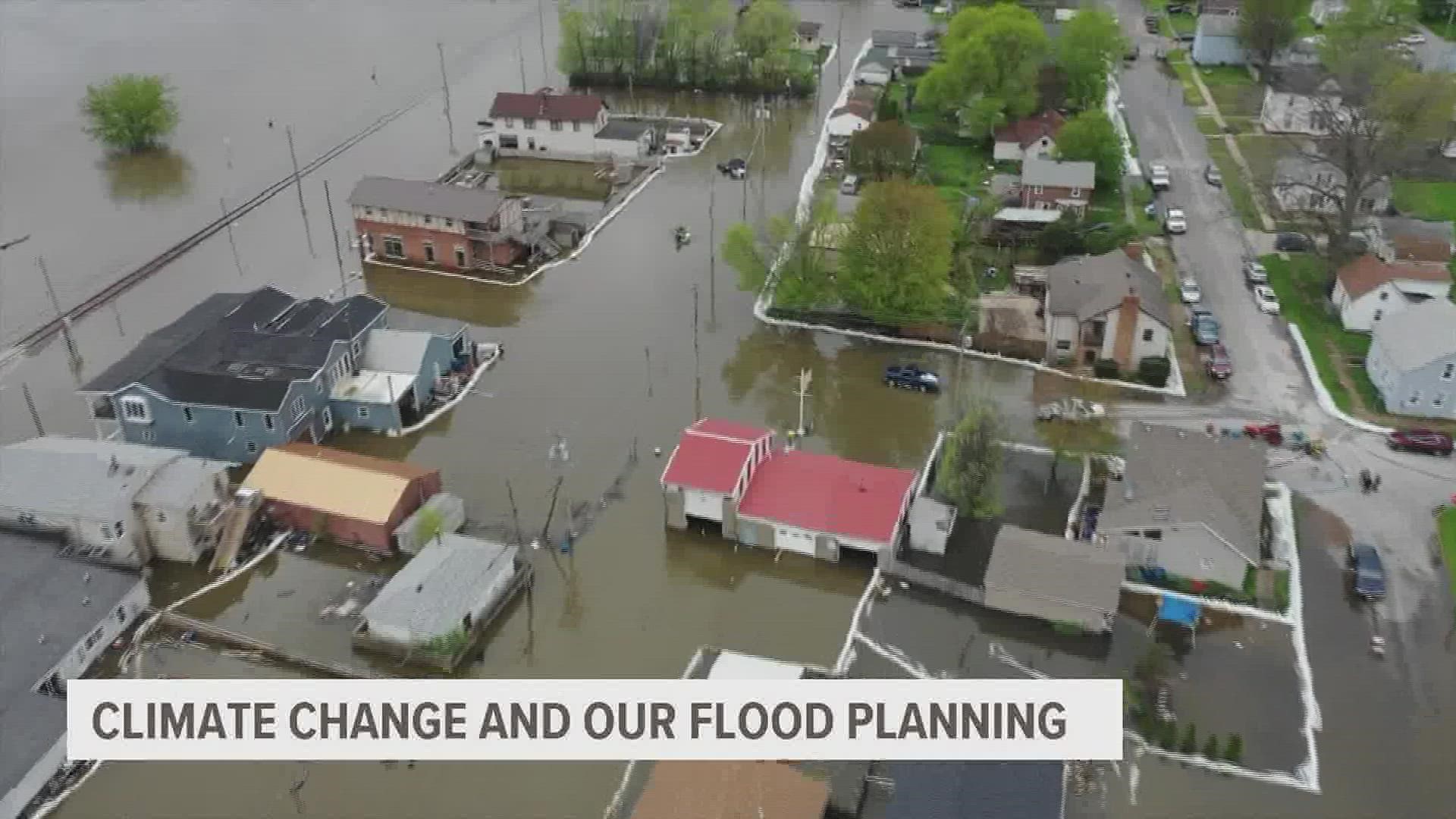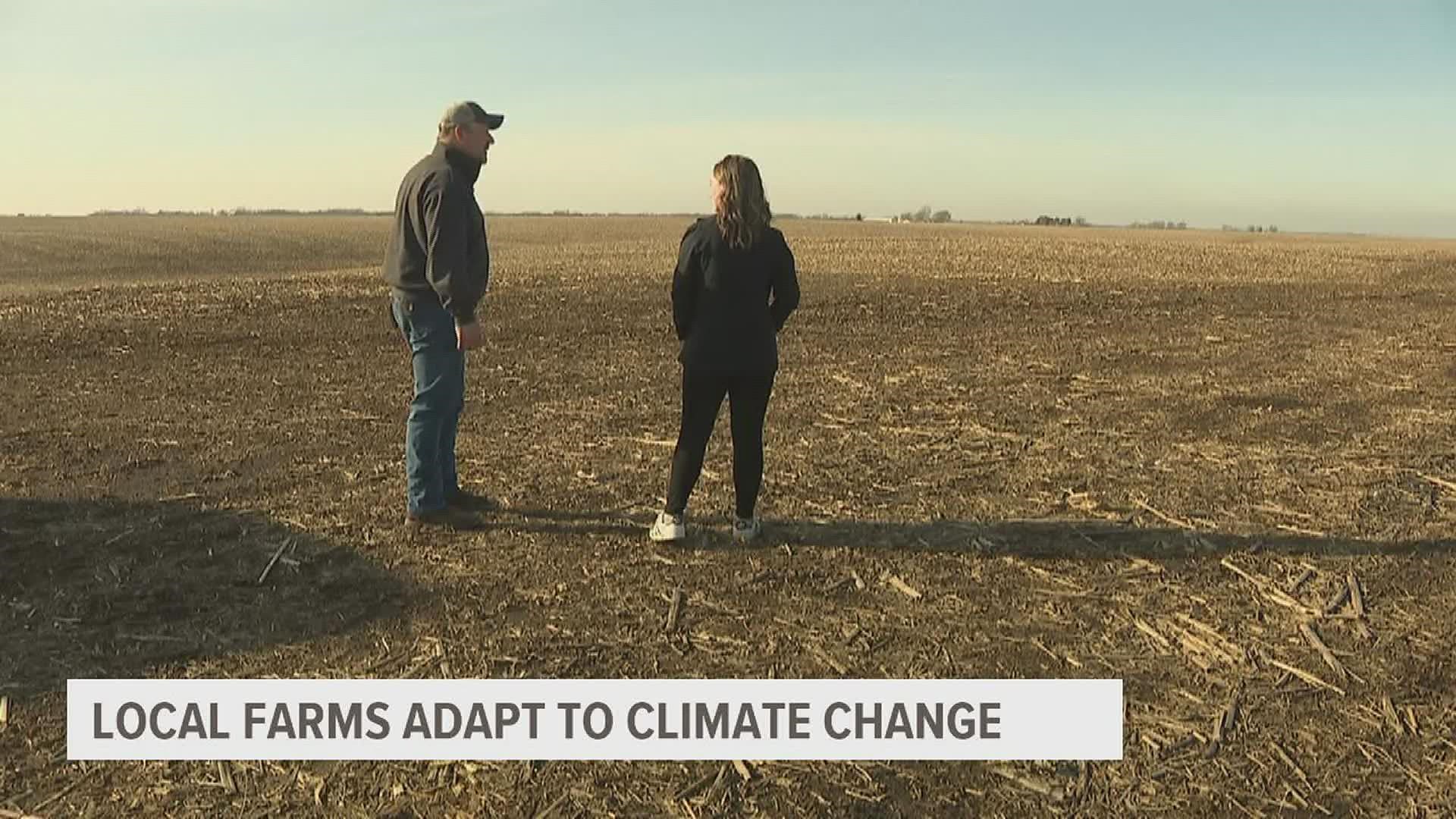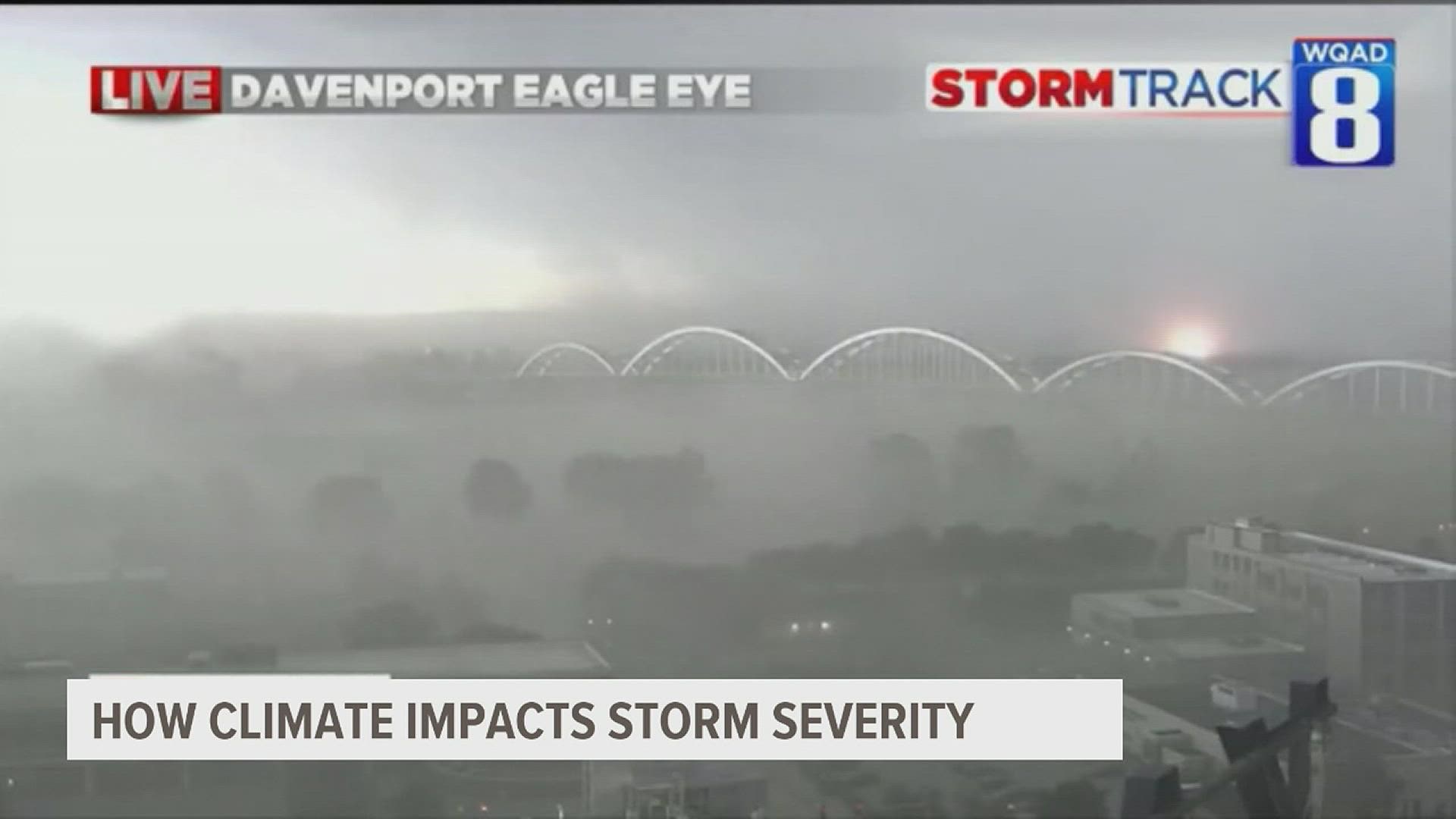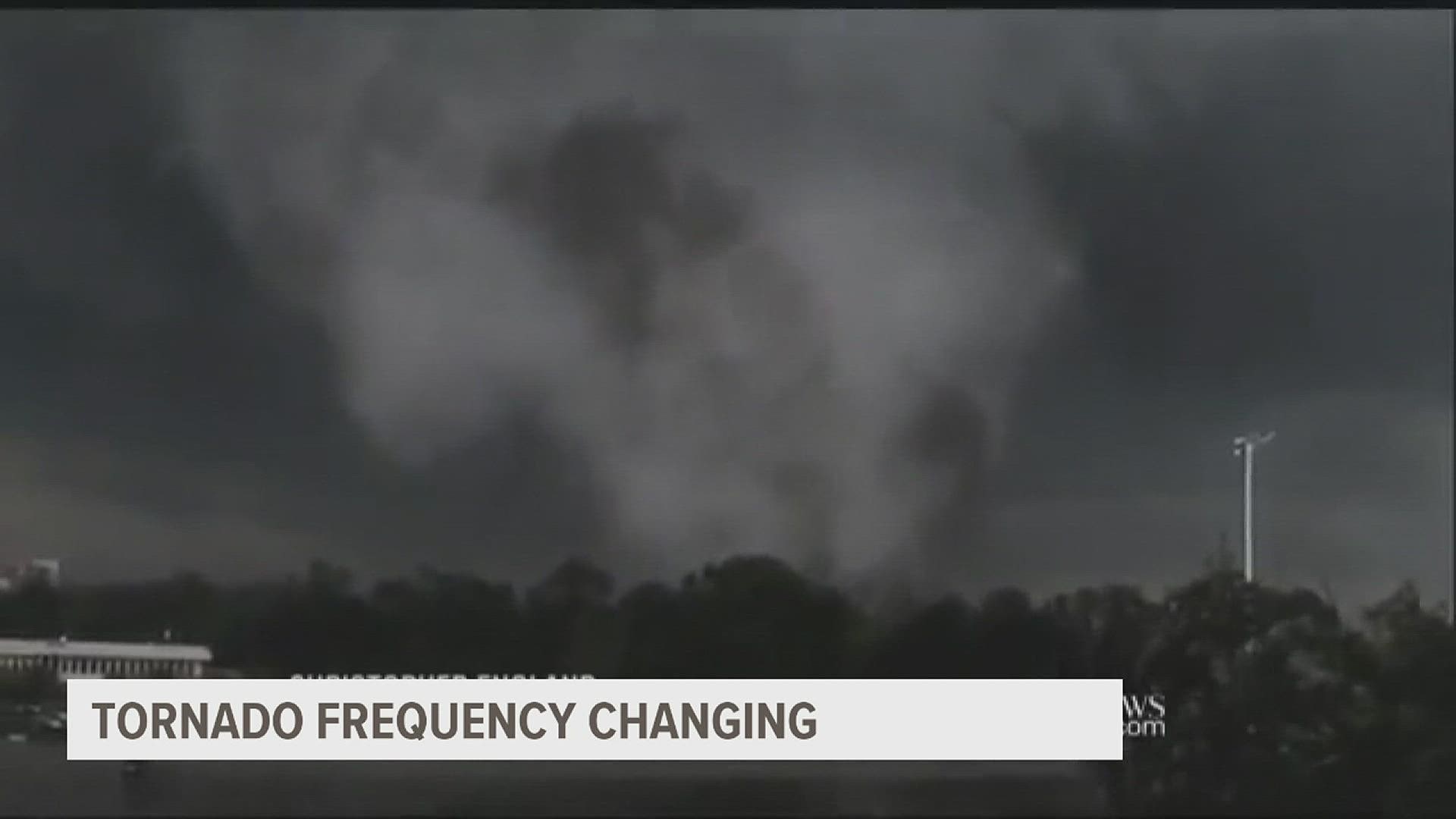MOLINE, Ill. — Understanding our weather is critically important in the Midwest. It's Storm Track 8's passion to not just bring you the highs and the lows of the day, but to help you learn more about the conditions that surround you.
The entire Storm Track 8 team will explore four different subjects in this report, ranging from Tornado Alley to how farmers on the front lines are battling a changing climate.
Following the 7 p.m. special on March 30, our team will answer your questions about weather in a live Q&A session starting at 7:30 p.m. Text 309-304-0888 with your question or ask us on Facebook.
Watch the livestream on News 8's YouTube channel
Floods getting higher, lasting longer along Mississippi River
When you live along the Mississippi River, it's all about being prepared for whatever comes your way, Buffalo Mayor Sally Rodriguez said.
"If we put either new buildings, sidewalks, anything else down there, we have to make sure that it is floodproof, so to speak," Rodriguez said.
It's a lesson learned from 2019 when the Mississippi climbed more than 6 feet higher than the Iowa town's flood stage. National Weather Service Meteorologist Rich Kinney told Storm Track's James Zahara that it's no coincidence we're seeing floods happen more often and that they're lasting longer and rising higher.
"Yes, this is the new normal, really, and in terms of looking off into the future, we're likely to see these trends continuing, at least through the end of this century," Kinney said.
A career influenced by weather: Farmers noticing more extremes over last decade
The weather influences our plans every second of every day. It impacts our outfits for the day and if we need to head to work early for a safer commute through the snow.
But for farmers, the weather impacts their livelihood.
Phil Fuhr is a sixth-generation farmer in Taylor Ridge.
"We have these extremes, we have lack of moisture or way too much moisture in short periods of time," Fuhr said. "And I guess that's what we've seen a lot in the last 10 years is more extremes than ever."
About 20 miles south of New Windsor is Jeff Kirwan's family farm. The farmer, who also has 30 years of experience, told Storm Track 8's Morgan Strackbein how the weather has changed for him.
"I remember growing up, it was a big deal when we had a tornado go through and roll the combine up in a little ball … but I don't remember these severe rain events that we've seen, you know, as of late," Kirwan said.
Overall, these farmers know there will never be a perfect season for agriculture. Farmers must be able to adapt, mitigate and learn along with the changing extremes.
"You can't change the weather, but you try to study it, you try to watch it, you try to understand it," Fuhr said.
"There's nothing we can do about it in agriculture," Kirwan said. "We just, you know, do the best we can and deal with it."
Why are these storms getting so powerful?
Severe weather in the Midwest can bring dangerous systems that develop quickly. A changing climate means better potential for those storms to be even more powerful.
Take for example the August 2020 derecho. Hurricane winds whipped through the heart of the Midwest, knocking out power for thousands and tearing apart crops, trees, homes and businesses.
It was one of the costliest storms in Iowa's history, but it's likely that it won't be the last.
"What we can do for severe weather is look at the environments that promote severe weather," said Ray Wolf, a science and operations officer with the National Weather Service.
Wolf's job is to watch for two things when storms develop.
"The CAPE, the amount of energy in the atmosphere that helps produce thunderstorms, and the wind shear: how the wind changes speed and direction with height," explained Wolf.
Scientists from Purdue found the warming of the Earth's atmosphere actually increases CAPE but decreases wind shear. That combination will ultimately create more thunderstorms.
More thunderstorms come with another dangerous phenomenon: tornadoes. While we've seen a rise in tornadoes, it's hard to pinpoint exactly why.
"A lot of that has to do with more people out looking for them and social media and cell phone cameras," Wolf said. "So it's hard to tell whether that's a real trend in an increase in tornadoes or just an increase in the observations."
If the proper conditions are met, severe thunderstorms and tornadoes can occur at any time during the year, not just in spring and summer.
As the Earth becomes warmer, there is more moisture available in the atmosphere. Because there is more water in the air, more snow will fall during snowstorms. Warming will also cause weather systems to stall or move slowly dumping more snow onto a specific area.
Tornado frequency is shifting faster than we think
The region in the Central Plains commonly referred to as “Tornado Alley” has changed in the last 50 years.
Tornadoes in this once-infamous part of the country are now becoming harder to find, as the ingredients needed for tornado development shift further to the east.
Areas that once saw a ton of tornado activity are now experiencing a decline, while the number of tornadoes is increasing in areas that are heavily populated.
You can read the complete study here.

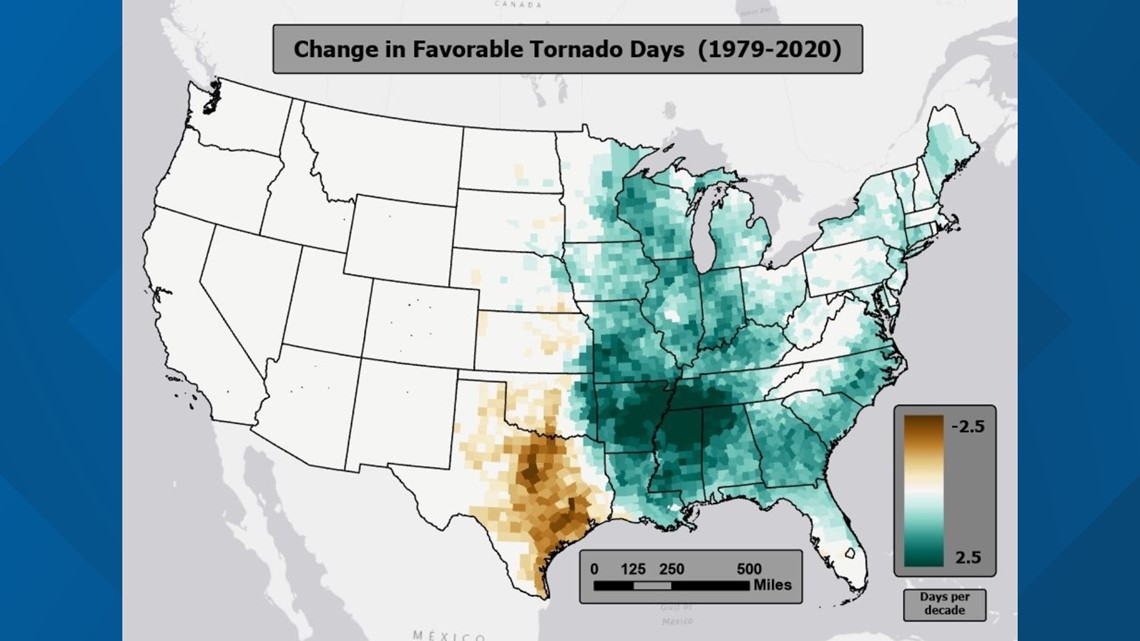
RELATED: Diving deeper into the TORNADO Act

